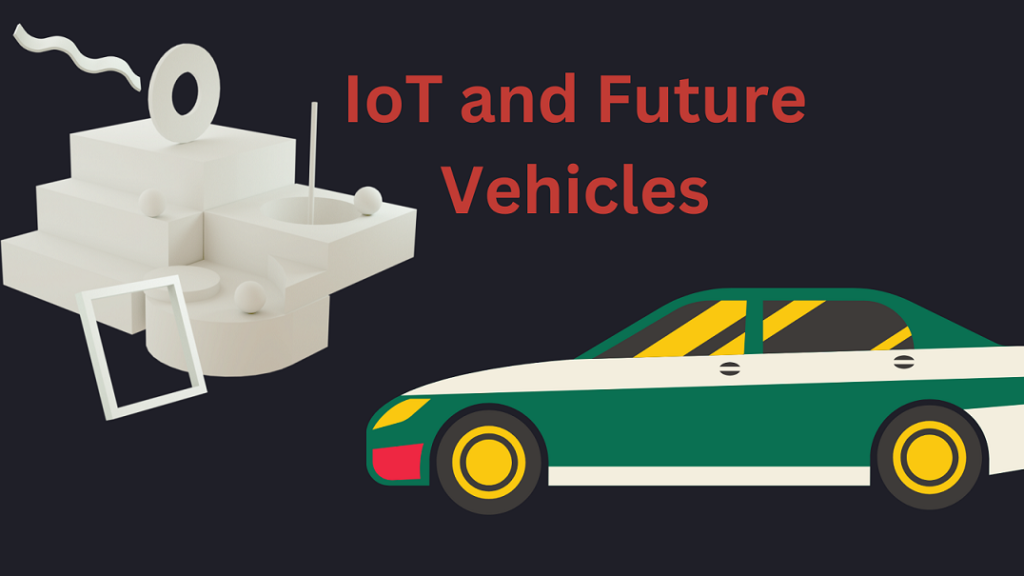
An Overview to IoT in Transportation
The Internet of Things (IoT) represents a significant advancement in technology, allowing various devices to communicate and exchange data over the internet. In the transportation sector, the IoT has emerged as a pivotal force, transforming how vehicles operate, interact, and integrate into the broader context of smart cities. By embedding sensors, software, and network connectivity within vehicles, IoT facilitates real-time data collection and analysis, which enhances efficiency, safety, and overall user experience.
This interconnectedness enables vehicles to share important information, such as traffic conditions, location data, and even maintenance needs, with other vehicles and infrastructure. For instance, vehicles equipped with IoT technology can alert drivers to potential hazards or changes in traffic patterns before they reach a critical point, thereby significantly reducing the likelihood of accidents. In essence, IoT serves as the backbone for the development of intelligent transportation systems, where vehicles not only navigate autonomously but also communicate seamlessly with each other and the surrounding environment.
Moreover, IoT has wider implications for fleet management and logistics. Companies can optimize routes based on real-time traffic data, monitor vehicle health, and analyze driving behaviors to reduce costs and improve safety. This wealth of connected data empowers businesses to make informed decisions, enhancing operational effectiveness and customer satisfaction. Additionally, the environmental impact of transportation can be mitigated through IoT solutions, as smart technology supports more efficient fuel consumption and reduced emissions.
Vehicle-to-Everything (V2X) Communication
Vehicle-to-Everything (V2X) communication represents a significant leap in automotive technology, enhancing both vehicle safety and operational efficiency. This technology facilitates communication between vehicles and various elements of their surroundings, including other vehicles, road infrastructure, and even pedestrians. By leveraging this interconnectedness, V2X communication offers remarkable improvements in road safety and traffic management.
One of the primary benefits of V2X communication is its potential to significantly reduce accidents. Vehicles equipped with this technology can share critical information such as real-time speed, direction, and potential hazards on the road. For instance, if a vehicle detects an imminent collision, it can alert nearby vehicles, allowing them to take evasive action. This proactive communication can potentially avert crashes and save lives, making V2X an essential component in the movement toward smarter, safer transportation.
Moreover, V2X communication enhances traffic flow, addressing the prevalent issue of congestion in urban environments. By allowing vehicles to communicate with traffic lights and infrastructure, V2X can facilitate coordinated movements, optimizing traffic patterns. For example, if a vehicle approaches a red light, it can receive data on when the light will change, allowing the driver to adjust speed and reduce unnecessary stops. This level of synchronization not only eases congestion but also contributes to a reduction in fuel consumption and emissions, promoting environmental sustainability.
Additionally, V2X communication extends beyond vehicles to include interactions with pedestrians. For example, smart crosswalk systems can notify vehicles of pedestrian movements, ensuring safety when crossing roads. By extending connectivity to all road users, V2X fosters an environment where safety and efficiency are prioritized, redefining urban mobility.
Real-Time Data Analytics: A Game Changer
In the rapidly evolving landscape of transportation, real-time data analytics emerges as a transformative force within future vehicles. By harnessing data collected from a multitude of sensors and Internet of Things (IoT) devices, vehicles can make informed and timely decisions that significantly enhance navigation, traffic management, and overall performance optimization. The integration of advanced data analytics into vehicular systems enables a seamless exchange of information, which is vital for facilitating smart transportation solutions.
At the core of this technology lies the ability to process vast volumes of data in real-time, enabling vehicles to react swiftly to dynamic environmental conditions. For instance, a vehicle equipped with real-time analytics can assess current traffic patterns, accurately predicting congestion and suggesting alternate routes to the driver. This not only improves the efficiency of travel but also contributes to reducing overall commute times, resulting in a more pleasant driving experience for users.
Moreover, performance optimization is another critical benefit. Modern vehicles are increasingly outfitted with IoT sensors that monitor numerous parameters, such as tire pressure, fuel efficiency, and engine performance. By analyzing these data streams in real-time, sophisticated algorithms can recommend maintenance before potential failures occur, thus prolonging vehicle lifespan and enhancing safety. For example, systems like predictive maintenance leverage real-time data to identify wear and tear patterns, alerting drivers to essential service needs.
Furthermore, concepts like connected vehicles show the potential for transformative traffic management. These vehicles communicate with each other and infrastructure, sharing data that allows for coordinated traffic flow. This shared intelligence can minimize stoppages and prevent accidents, showcasing the profound impact of real-time analytics. Thus, as the integration of IoT technologies advances, the future of transportation holds immense promise, signaling a new era of smart, data-driven vehicles.
Predictive Maintenance for Enhanced Vehicle Longevity
The integration of Internet of Things (IoT) technology into modern vehicles represents a significant advancement in predictive maintenance, a strategy designed to enhance vehicle longevity and reliability. By utilizing a network of sensors embedded within various components of a vehicle, IoT facilitates real-time monitoring of the vehicle’s health. This constant stream of data allows for the assessment of multiple parameters, including engine performance, brake conditions, and tire integrity, enabling early detection of potential issues before they escalate into more severe problems.
These IoT sensors provide critical insights by analyzing metrics such as temperature, vibrations, and fluid levels. For instance, if a sensor detects an irregular increase in engine temperature, it can alert the vehicle owner or operator, prompting timely intervention. This proactive approach not only mitigates the risk of unexpected breakdowns but also enhances safety on the road. Regular alerts regarding maintenance needs—such as oil changes, tire rotations, or brake inspections—based on real-time data contribute to job efficiency while extending the health of the vehicle.
The implementation of predictive maintenance through IoT not only maximizes the lifespan of the vehicle but also optimizes operational efficiency. Fleet operators, for example, can leverage this technology to schedule maintenance proactively, thereby minimizing downtime and reducing costs associated with emergency repairs. Moreover, by monitoring usage and performance trends, owners can make informed decisions about their vehicles’ service needs and avoid the detrimental effects of neglect.
User Experience Enhancement through Smart Connectivity
The integration of Internet of Things (IoT) technologies in future vehicles is fundamentally transforming the driving experience by elevating user interaction and satisfaction. One of the most significant advancements is the development of personalized infotainment systems. These systems harness data from a multitude of sources, including the driver’s preferences and driving habits, to tailor content and recommendations accordingly.
Moreover, automated driving assistance features significantly contribute to user experience enhancement. The capabilities of IoT allow vehicles to include advanced driver-assistance systems (ADAS) that enhance safety and convenience. These systems utilize sensors and real-time data processing to provide functionalities such as adaptive cruise control, lane-keeping assistance, and automatic parking. As a result, drivers can enjoy a more relaxed and stress-free driving experience, as these tools manage numerous aspects of vehicle operation, allowing users to focus on other priorities.
Environmental Impact and Sustainability
The integration of Internet of Things (IoT) technology within the automotive sector holds significant promise for enhancing environmental sustainability. One of the most compelling advantages of IoT in future vehicles is its potential to reduce carbon emissions through improved traffic management. Smart traffic systems that utilize real-time data allow for the optimization of vehicle flow, reducing congestion and, consequently, minimizing idle times. This not only helps in cutting down fuel consumption but also decreases harmful emissions released into the atmosphere.
Additionally, the promotion of electric vehicles (EVs) is another area where IoT demonstrates its positive impact. IoT-enabled charging infrastructure empowers users by providing them with information about the availability of charging stations, optimal charging times, and vehicle range. Such technologies encourage drivers to transition to electric vehicles, which produce lower emissions compared to traditional gasoline or diesel cars. The role of IoT in enhancing the logistics and infrastructure supporting EVs is pivotal in ensuring a sustainable future for transportation.
Moreover, the optimization of resource usage within the automotive industry is significantly advanced through IoT applications. By using data analytics and connectivity, manufacturers can monitor vehicle health and performance in real-time, leading to timely maintenance and reducing waste. Intelligent inventory management ensures that production processes are efficient, thereby minimizing the excessive use of materials and energy. As a result, IoT facilitates a transition towards more sustainable manufacturing practices that mitigate the environmental footprint of vehicle production.
Challenges and Concerns in IoT Deployment
The integration of IoT technologies into future vehicles offers remarkable benefits, yet it also presents several challenges and concerns that must be addressed to ensure its success. One of the most significant issues is cybersecurity. As vehicles become increasingly connected, they are more vulnerable to cyberattacks, which can lead to unauthorized access and manipulation of essential vehicle functions. A well-coordinated security strategy is necessary to protect against such threats, including the implementation of encryption protocols and regular updates to software to address any vulnerabilities.
Data privacy is another critical concern in the deployment of IoT in vehicles. The collection of vast amounts of data from vehicles, including location, driving habits, and personal information, raises questions about how this data is stored, used, and shared. Striking a balance between utilizing data for enhanced user experiences and protecting individuals’ privacy is essential.
Furthermore, the need for robust infrastructure to support vehicle-to-everything (V2X) communication is crucial in the successful deployment of IoT technologies. Implementing V2X communication involves the seamless exchange of data between vehicles and surrounding environments, which requires advanced road networks, reliable cellular connectivity, and comprehensive data analytics capabilities.
Addressing these challenges is pivotal for the continued advancement of IoT in transportation. Stakeholders, including manufacturers, regulators, and technology providers, must collaborate to develop comprehensive strategies that mitigate cybersecurity risks, protect personal data, and enhance infrastructure readiness. By doing so, the deployment of IoT technologies in vehicles can pave the way for safer, more efficient, and smarter transportation solutions.
The Future of Transportation: Trends and Innovations
The transportation sector is undergoing a significant transformation driven by the Internet of Things (IoT) and advanced technology. In recent years, several key trends have emerged that will shape the future of automobiles and personal transport systems. Firstly, the rise of connected vehicles is at the forefront of this evolution. Automobiles are increasingly equipped with IoT devices that facilitate real-time data sharing between vehicles and their environment. This connectivity enables features such as predictive maintenance, vehicle-to-vehicle (V2V) communication, and enhanced navigation systems, significantly improving safety and convenience for users.
Moreover, the integration of artificial intelligence (AI) within IoT frameworks is set to revolutionize how vehicles operate. AI algorithms analyze vast amounts of data from various sensors to optimize driving patterns and make autonomous driving a reality. Autonomous vehicles, or self-driving cars, are under development by several leading automotive manufacturers, aiming to reduce accidents and enhance traffic flow through smart algorithms that can react faster than humans.
Regulatory frameworks are also evolving to accommodate these advancements, as governments worldwide recognize the need for guidelines that ensure safety and efficiency. Policies are being introduced to address data privacy and cybersecurity, two critical areas concerning connected vehicles. As the industry adapts to these changes, manufacturers are investing in robust security measures to protect user data and maintain trust among consumers.


